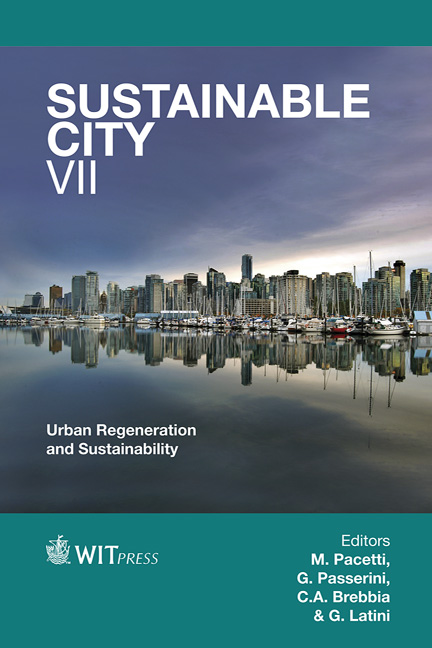Vertical Vegetation Design Decisions And Their Impact On Energy Consumption In Subtropical Cities
Price
Free (open access)
Transaction
Volume
155
Pages
12
Page Range
489 - 500
Published
2012
Size
540 kb
Paper DOI
10.2495/SC120411
Copyright
WIT Press
Author(s)
Y. Stav & G. Lawson
Abstract
Vertical vegetation is vegetation growing on, or adjacent to, the unused sunlit exterior surfaces of buildings in cities. Vertical vegetation can improve the energy efficiency of the building on which it is installed mainly by insulating, shading and transpiring moisture from foliage and substrate. Several design parameters may affect the extent of the vertical vegetation’s improvement of energy performance. Examples are choice of vegetation, growing medium geometry, north/south aspect and others. The purpose of this study is to quantitatively map out the contribution of several parameters to energy savings in a subtropical setting. The method is thermal simulation based on EnergyPlus configured to reflect the special characteristics of vertical vegetation. Thermal simulation results show that yearly cooling energy savings can reach 25% with realistic design choices in subtropical environments. The most important parameter is the aspect of walls covered by vegetation. Vertical vegetation covering walls facing north (south for the northern hemisphere) will result in the highest energy savings. In making plant selections, the most significant parameter is Leaf Area Index (LAI). Plants with larger LAI, preferably LAI>4, contribute to greater savings whereas LAI<2 can actually consume energy. Change of growing medium thickness from 6cm to 8cm causes a dramatic increase in energy savings from 2% to 18%. It is best to use a growing material with high water retention, due to the importance of evapotranspiration for cooling. Similarly, for increased savings in cooling energy, sufficient irrigation is required. To conclude, the choice of design parameters for vertical vegetation is crucial in making sure that it contributes to energy savings rather than energyKeywords
vertical vegetation, living walls, thermal simulation, energy consumption, sustainable design





